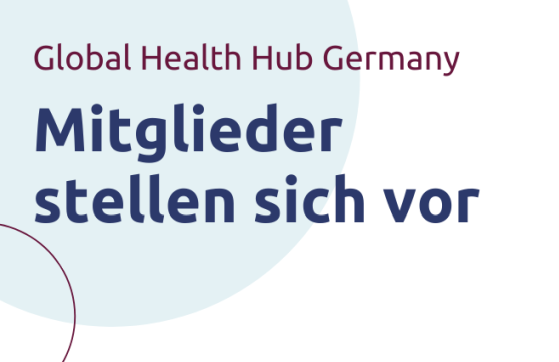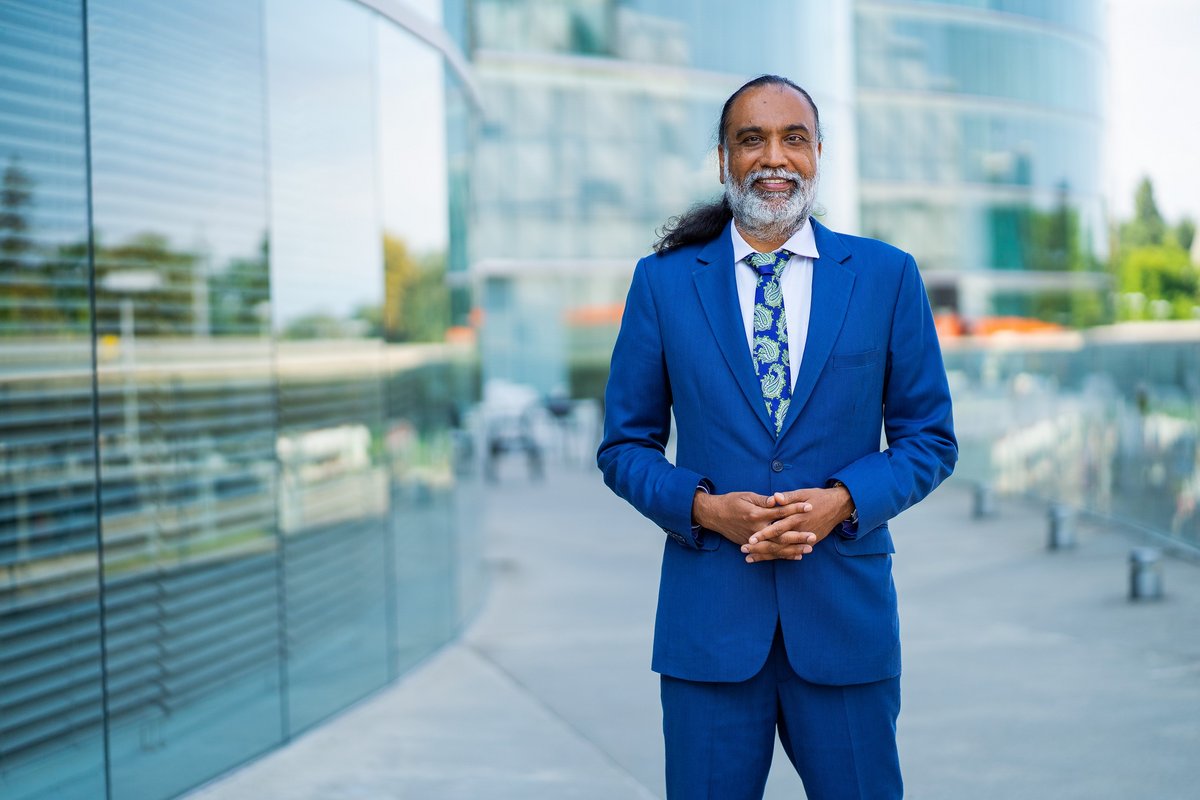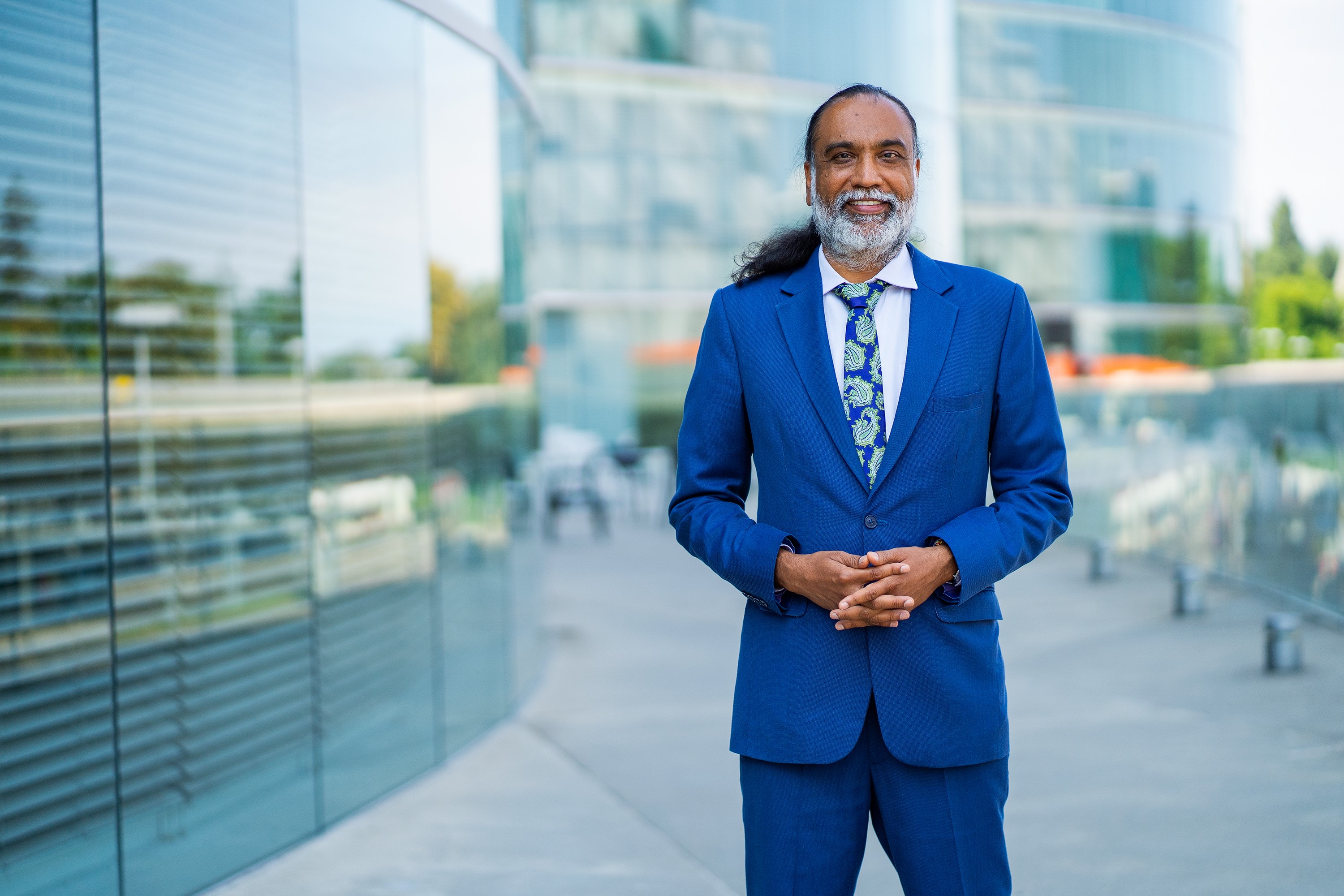Mitglieder stellen sich vor: I-DAIR - The Inclusive Path to Trusted AI and Big Data Applications in Digital Health

The Fourth Industrial Revolution is reshaping economies, institutions and how humans live their daily lives all around the planet. Different use cases for Big Data and Artificial Intelligence have already started to find their way into the health field as well, posing questions about their potential for the future, the associated risks and how to best govern this highly innovative and dynamic sector. The Global Health Hub Germany recently gained a valuable ally when it comes to tackling these pressing issues: The International Digital Health and Artificial Research Collaborative (I-DAIR) was founded at the Graduate Institute of International & Development Studies Geneva in 2019 in order to further the democratisation of the use of data and AI in the health sector. Today we will be talking to I-DAIR’s CEO and Project Director Amandeep Singh Gill who is one of the leading experts on responsible AI research and development.
What is the International Digital Health and Artificial Research Collaborative's mission and how I-DAIR is working towards achieving its goals?
I-DAIR is a project to cocreate a new international platform for the inclusive, impactful and responsible research and development of digital technologies for health. This is in follow up to the recommendations of the UN Secretary General's High Level Panel on Digital Cooperation and targets set by the WHO on universal and quality health coverage. We seek to be both independent and distributed to better federate science and innovation capacity from around the world, almost like a distributed CERN for AI and digital health. CERN brought together resources, a transdisciplinary community of scientists and generated public goods for nuclear research. We aim to complement WHO's role in orchestrating the interplay of national and international efforts in digital health by focusing in particular on networks, needs and opportunities in small states and the Global South.
Some of I-DAIR's main hubs are located in states of the Global South. Are you seeing a greater willingness to collaborate or maybe even a stronger drive for innovation in these countries?
They say necessity is the mother of invention. In these geographies there have been critical shortages. Investments into the health sector have been insufficient. In many areas people are starting from scratch. This allows them to be more architectural in their approach to digital health and the use of data and AI. This compares and contrasts with the approach in developed countries where you have legacy systems that are largely paper based or rely on commercial digital technologies, which are not that interoperable. In these countries, we also see the rise of a generation of smart scientists and innovators that is eager to contribute to not only solving their own national problems, but global problems as well.
We are not only focusing on the Global South but also some of the smaller states among high income countries. These are savvy states like Estonia who get digital but who, on their own steam, would not have the amount of data resources that would allow them to develop the kind of applications that US, China, or some of the bigger EU countries might put together. We see both these categories of countries as relevant stakeholders that would play a key part in bringing together different capabilities for the greater good.
In what kind of areas of Global Health do you currently see the most potential for Big Data and AI applications?
A big area with potential is inclusiveness in terms of reach of health services. You have critical shortages of trained manpower in several areas of ophthalmology, cancer specialists and so on in many parts of the world. Doctors often do not serve rural and remote areas. Digital health can bring these critical services to underserved populations. Data can help us pinpoint the opportunities, aggregate the expertise and deliver it where it is most needed.
The second opportunity is the transformation of our existing health systems, bringing more efficiency, more cost effectiveness, more precision in terms of public health and more responsiveness. This is something that has happened in many other fields with the digital transformation. So why not in the health sector as well?
And the third opportunity I would point out is in pandemic services and management, where artificial intelligence can help us tie together multiple sources of data, including unusual ones from the “One Health” domain, namely animal, human, planetary and ecosystems health considered together.
Aside from slowly adapting nation states and potentially less interoperable commercial entities, where do you see the major hurdles that need to be overcome on the way to a digital health future that is guided by AI technology?
One of the hurdles is the lack of appreciationof opportunities and obstacles at the higher levels of government. Leaders need to lead on the digital transformation. The other is public trust and in particular health workers’ trust in these technologies. If they are pitched as potential replacements, there will be resistance to their implementation. They need to be conceived and built as complementary capabilities and enhancements. Obviously, there is a question in terms of theworkforce’s training. It is not just a question of having smart computer scientists or smart genomics specialists. You need to build a new generation of these crossover artists who can help shape the field, who can bring insights from different domains together. Lastly, if the data use is not gained through engagement of citizens and theirdata empowerment, then again, we will have a problem of trust.
In regards to data flow and international data sharing, you are advocating a more liberal flow on usage of data?
Yes, in the sense that we want data for health to beapublic good. It should not be locked up in commercial data warehouses or public data sets. Instead, it should be available to scientists, researchers, and innovators so that they can work with it, of course, in well-governed ways where data is not misused or exploited. In the long term, data should be a public good, just as the Internet and connectivity or the roads that we use are public goods.
I understand there are sensitivities around cross border flows of data and many issues to be resolved there, but exceptions can be made and ways can be found to bring data together without it having to leave national boundaries. We are working on something we call research infrastructure. We are also working on protocols and governance teams that allow us to aggregate data without necessarily having to pool it.
How important is interdisciplinary and intersectoral collaboration for your work at I-DAIR?
Absolutely critical. We can describe our work in many ways, but for me, a key metric of success is building an inclusive, collaborative and transdisciplinary community. A crossover thinking where you can see the world with different eyes allows you to try and put something together that is closer to the real world reality. At I-DAIR this is fortunately a feature of almost all of our team members. We have people who move from the health space to the digital space and from the digital space to the health space. They bring these different perspectives together.
I-DAIR joined the Global Health Hub Germany very recently and it sounds like the two are a perfect match. What are you hoping to achieve working in the network?
Yes indeed. We are engaging more and more with the German ecosystem and Germany is a leader in Global Health issues while recently even stepping up its role. This is very timely for us. We have some memoranda of understanding with German partners. We are working closely with the German government on some of their plans for next year, when Germany will be the G7 President.
With the Global Health Hub we hope to be able to reinforce the inclusiveness and the transdisciplinary perspectives in some of these discussions, to bring more examples of innovative thinking and solutions from the emerging geographies of innovation. We are also looking for partnerships and collaborators on addressing some of these global challenges, such as the transformation of health systems to include the 50% of the world population that is currently underserved, building new approaches to human centered benchmarking, or digitally enabled distributed clinical trials that will actually return value to those who are participating in those trials. Interested members are welcome to contact me!
For more details around I-DAIR’s work, feel free to visit their website or contact them atcontact@i-dair.org.

